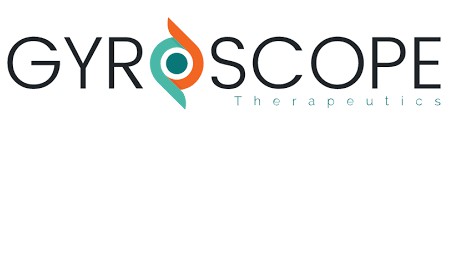
UK biotech Gyroscope Therapeutics could have a mass market product on its hands if its new gene therapy for one of the most common form of blindness proves effective.
The company has just dosed the first patient in a phase 1/2 trial of its gene therapy for dry age-related macular degeneration (AMD), one of the leading causes of blindness worldwide.
In 2020 it is estimated that 196m people globally will have the disease while 11m will already have significant vision loss. In the UK it affects around 600,000 people.
While other gene therapy pioneer companies have targeted rare eye diseases first, Gyroscope could open up a huge global market if the drug proves its worth in trials.
Its GT005 candidate has been injected into the back of one of the patient’s eyes in a bid to prevent further degeneration of photoreceptor cells in the retina. The patient, an 80-year-old woman from Oxford named Janet Osborne, has geographic atrophy (GA) associated with dry AMD, which causes blurring in the central vision of her left eye.
There are no approved therapies for the dry form of AMD, although antibodies can be used to treat the wet form of the eye disease, which is caused by abnormal blood vessel growth in the retina. Dry AMD is caused by the gradual death of retinal cells that can occur over many months or years and is far more common.
GT005 was administered under a local anaesthetic by Robert MacLaren, an ophthalmology specialist at Oxford Eye Hospital. It takes the form of a targeted, one-off injection into the macula of the retina that is designed to locally modulate the activity of complement, part of the innate immune system.
Complement consists of a series of soluble proteins intended to fight off foreign invaders in the body by activating a cell-killing factor called the membrane attack complex (MAC), but in dry AMD seems to run amok, damaging healthy retinal cells. GT005 uses a virus to deliver a gene sequence coding for a protein that prevents complement from attacking the cells. it is the first of Gyroscope’s gene therapies to progress into the clinic.
The initial trial is designed to check that the procedure is safe and provide some evidence that it can slow down photoreceptor cell degeneration, and if early signs are positive testing will be expanded to include patients with less advanced AMD.
“A genetically defined treatment administered early on to preserve vision in patients who would otherwise lose their sight would be a tremendous breakthrough and certainly something I hope to see in the near future,” said MacLaren.
Eye diseases have been an early target for gene therapies because delivery into the eye is relatively simple. The first approved gene therapy in the US was Spark Therapeutics’ Luxturna (voretigene neparvovec) for inherited retinal dystrophy (IRD) caused by RPE65 gene mutations, which was also cleared in Europe towards the end of last year.
Meanwhile, researchers at the US National Institutes of Health are also preparing for human trials of a stem cell-based implant for AMD that is designed to replace the photoreceptor cells lost in the disease.
Based at the biotech cluster Bio-Catalyst Science park in Stevenage in southern England, Gyroscope is one of several cell and gene therapy companies being funded by life sciences investment firm Syncona.
Chris Hollowood, chief investment officer of Syncona and chairman of Gyroscope, said: “The evolution of Gyroscope into a clinical stage company is a great milestone and an example of Syncona’s expertise in harnessing ‘Third Wave’ technologies to develop therapies for serious diseases. Gene therapies are at the forefront of a new generation of treatments for retinal diseases and we are excited by the potential of Gyroscope’s novel approach to address one of the world’s biggest causes of blindness.”

Dr Soraya Bekkali
Dr Soraya Bekkali, chief executive of Gyroscope Therapeutics, commented: “Our goal at Gyroscope is to advance new therapies for the treatment of debilitating eye diseases such as age-related macular degeneration. Building on the research of Gyroscope’s scientific founders, we have been working relentlessly over the last two years to advance our first drug development programme into the clinic.
We are delighted to have dosed the first patient in the FOCUS study. We believe this is a great step forward in developing a therapy to treat dry AMD, while we continue our efforts on expanding our clinical programmes internationally.”




